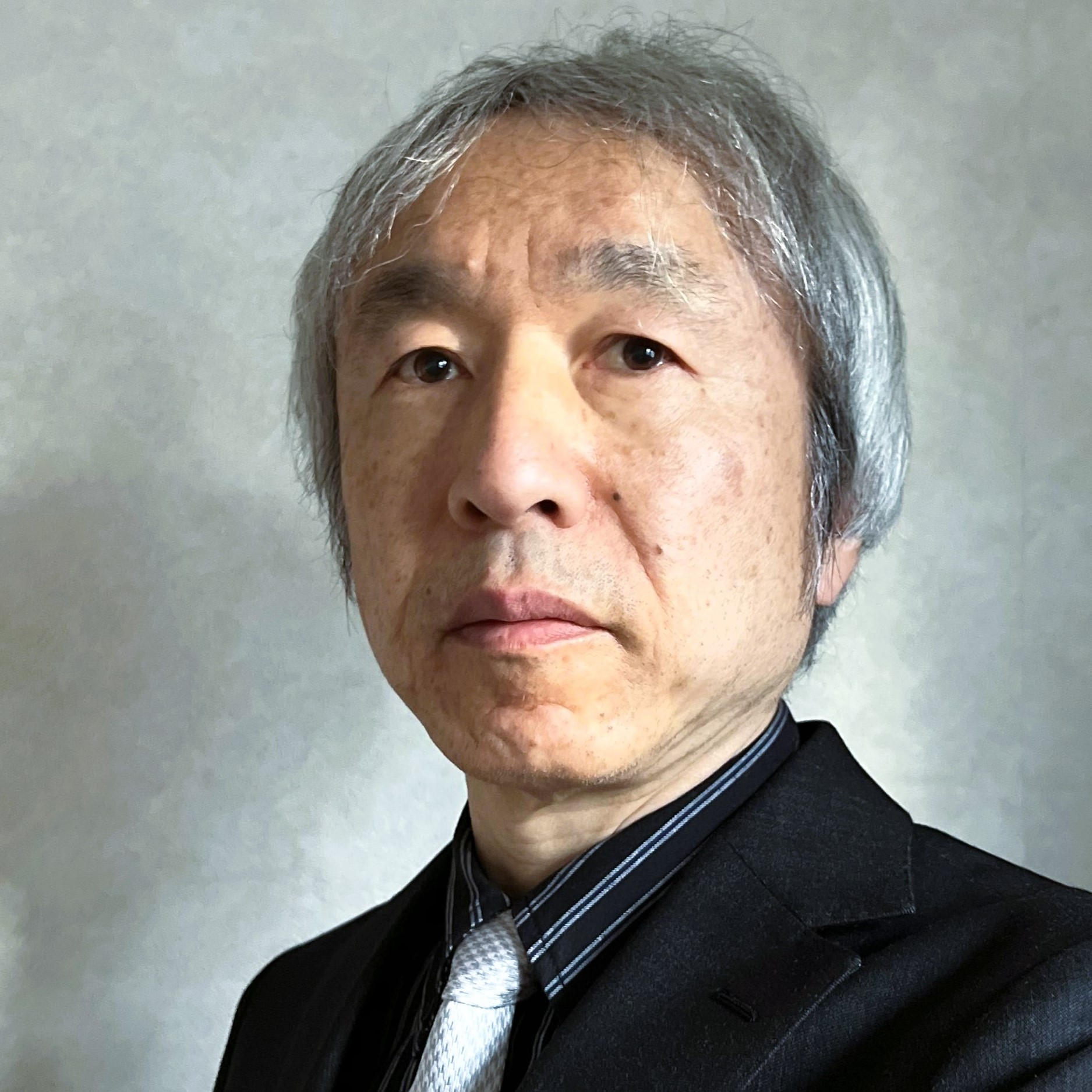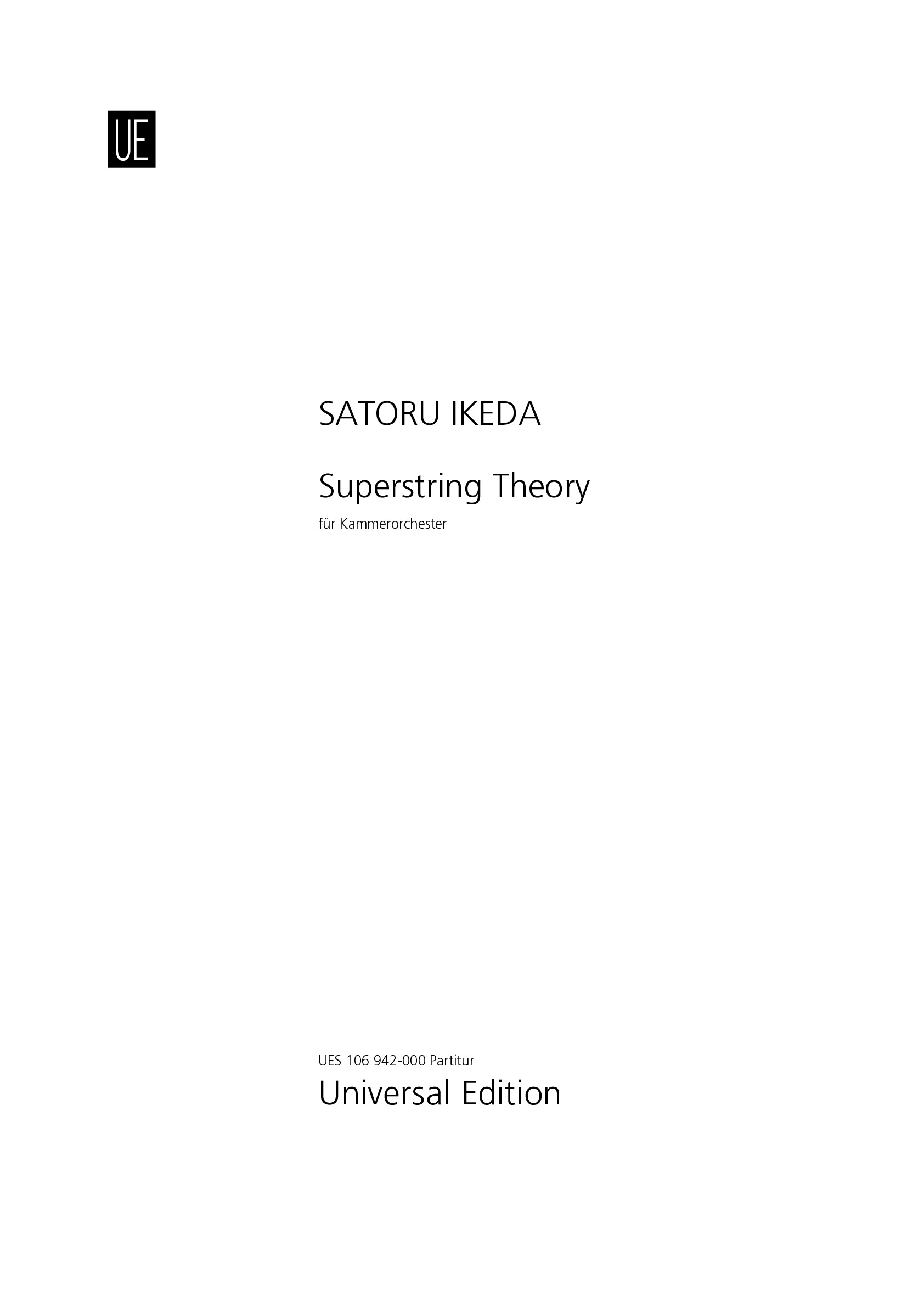

SATORU IKEDA
Superstring Theory
Short instrumentation: 0 0 0 0 - 0 0 0 0, mar, vib, pno, str
Duration: 7'
Instrumentation details:
marimba
vibraphone
piano
violin I (5 players)
violin II (4 players)
viola (3 players)
violoncello (2 players)
double bass
Superstring Theory
Sample pages
Audio preview
Video
Work introduction
The universe is composed of strings … "Superstring theory is an attempt to explain all of the particles and fundamental forces of nature in one theory by modeling them as vibrations of tiny supersymmetric strings." (Wikipedia).
This work, a concertino featuring solo piano, is structured as an "inverse symmetrical series" of 35 tones arranged around Middle C [see notation]. Ikeda's style generally emerges from a single cell (tone row), which evolves into two contrasting motifs. These two motifs develop together, and through tension and fusion grow in energy, developing into great waves. A sympathy for the sonata form is at the bottom of this aesthetic concept. That is, motifs develop organically. It's not just an idea or an emotion, but an editorial. He aims to move the listener by the development of the tone series, through the creation of sound material; to this end, symmetry is applied in its development. For example, in the first half of the score, the first and second violins that play pizzicato are replaced in the variation. At the conclusion, the retrograde form of the figure is also used to create persistence. These methods are rather Baroque.
To symbolize the structure of the piece, and the rich sound produced on the string ensemble and piano, Ikeda has adopted the title of the theory for this work.
"Superstring Theory" was awarded from the ALFRED SCHNITTKE | International Composers' Competition 2018 – 3rd Edition, and selected for the ISCM Virtual Collaborative Series 2020.

